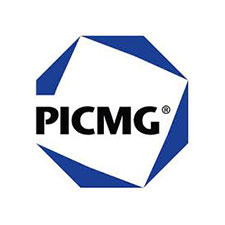With over 25 years of experience in embedded computing, PICMG has published 50+ Standards written by members from hundreds of companies.
Formally known as the PCI Industrial Computer Manufacturers Group, PICMG was originally founded in 1994 to extend the PCI Standard to non-desktop applications.
Today, PICMG has expanded far beyond the PCI Standard, developing key standards including CompactPCI®, MicroTCA®, COM Express®, and COM-HPC®.

COM-HPC®
This standard is intended to coexist with the existing COM Express® standard. COM-HPC® supports two different module types – one for high performance computing and one for embedded computing.
COM-HPC® improves on what is achievable in COM Express today. COM-HPC® uses a new high-speed connector able to support existing and future interfaces such as PCI Express® 4.0/5.0 and up to 100 Gb Ethernet.
This specification targets medium-to-high performance server class processors. COM-HPC® also supports larger board sizes to accommodate more memory.

MicroSAM®
MicroSAM® is a new PICMG effort to create a postage-stamp form factor that does not depend on the microcontroller for the enablement of smart sensors.
The new form factor assists sensor vendors to quickly create smart sensors without having to worry about its control domain. When combined with the PICMG sensor domain network architecture and data model, MicroSAM® allows sensors to seamlessly integrate into the network with plug-and-play interoperability.

MicroTCA®
MicroTCA® is a modular, open standard for building high performance switched fabric computer systems in a small form factor. At its core are standard Advanced Mezzanine Cards that provide processing and I/O functions.
MicroTCA systems are both physically smaller and less expensive than AdvancedTCA systems, although their internal architectures are largely the same. MicroTCA was originally intended for smaller telecom systems at the edge of the network but has moved into many non-telecom applications, with standardized, ruggedized versions becoming popular in mobile, military, telemetry, data acquisition, and avionics applications.


